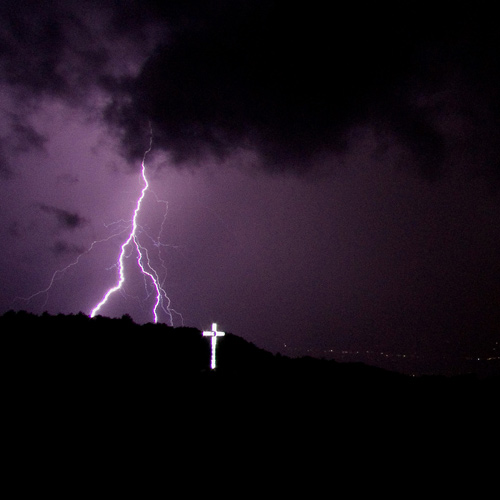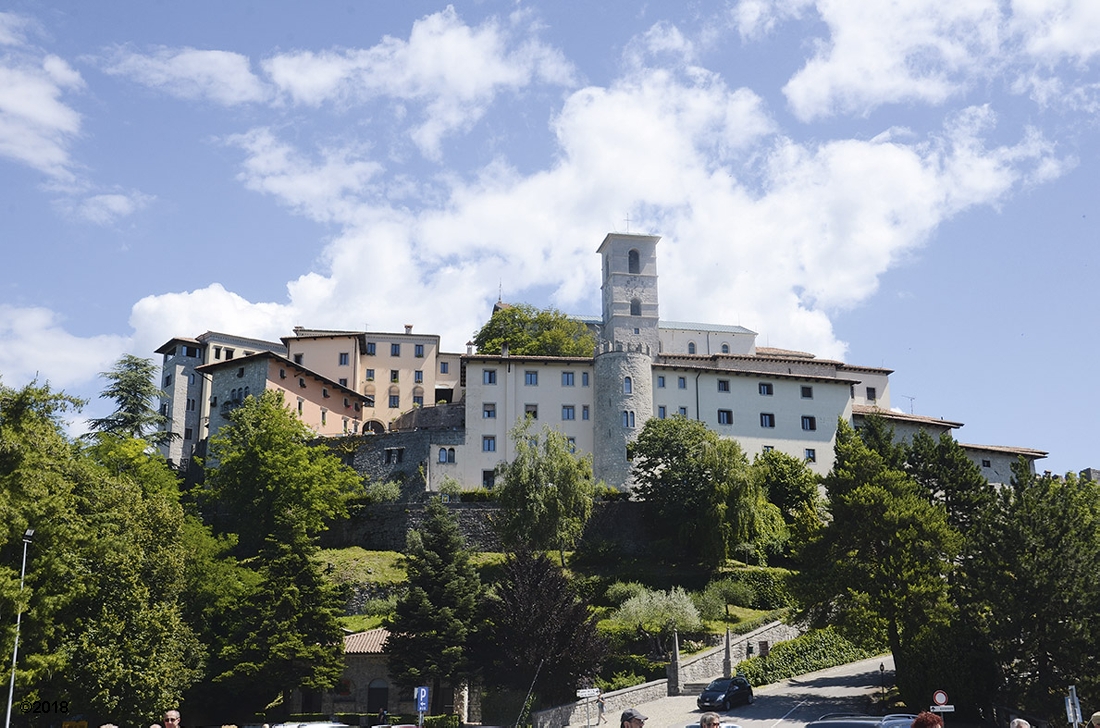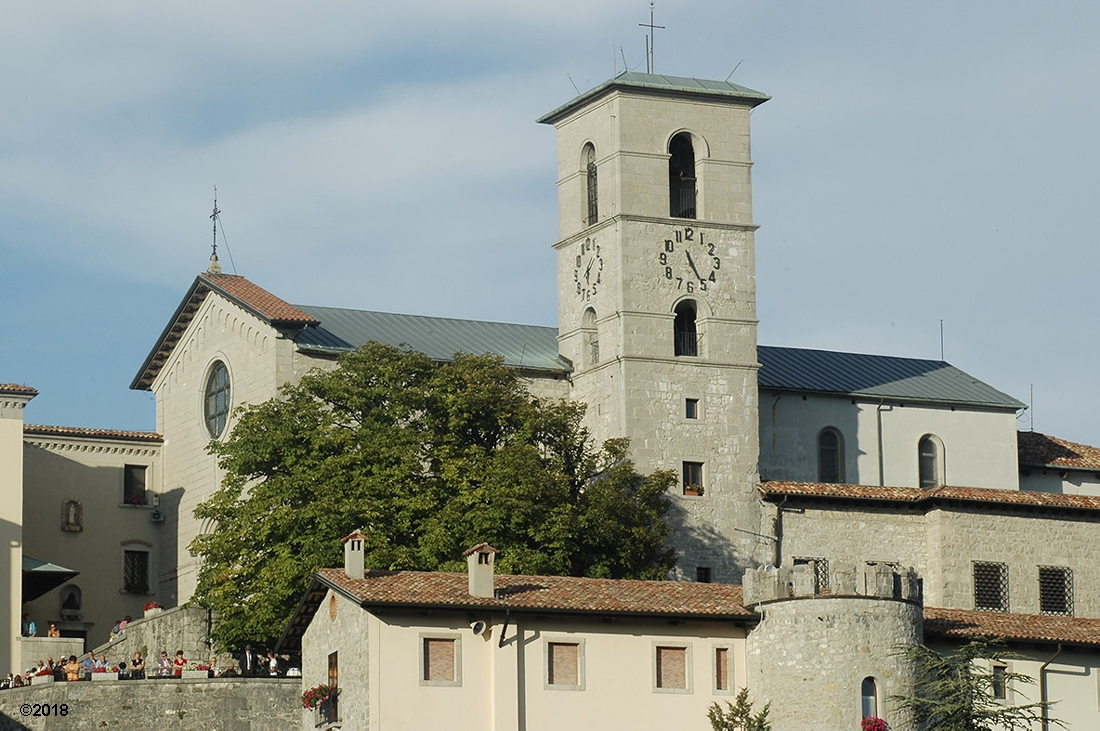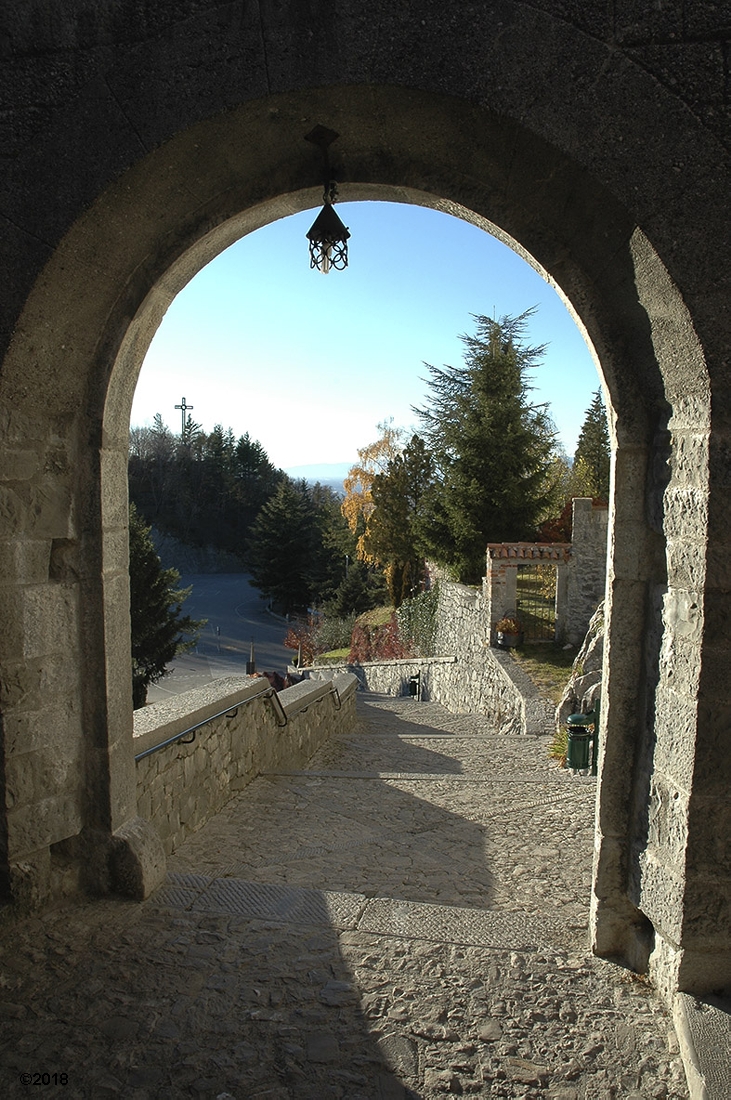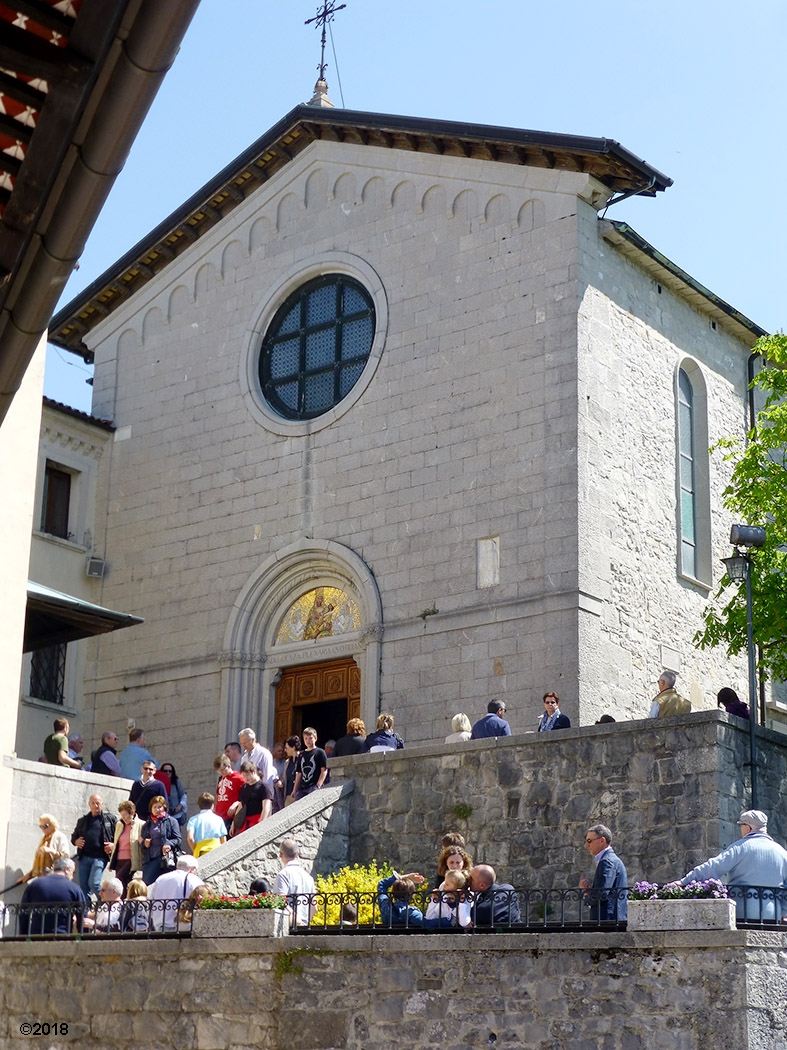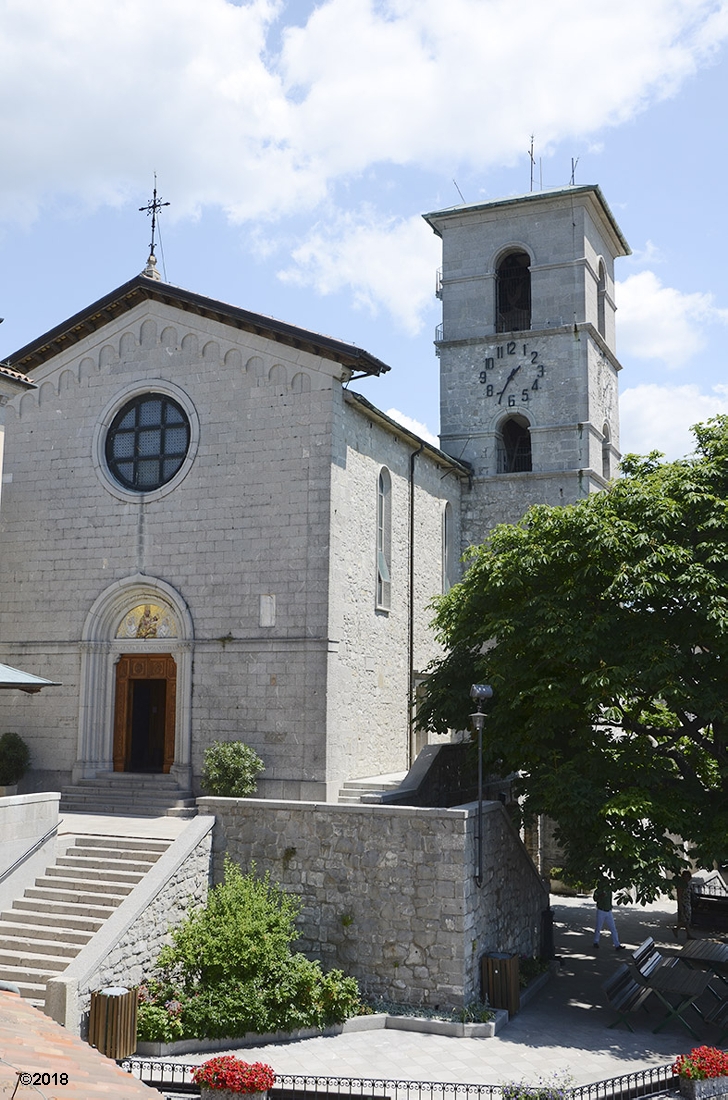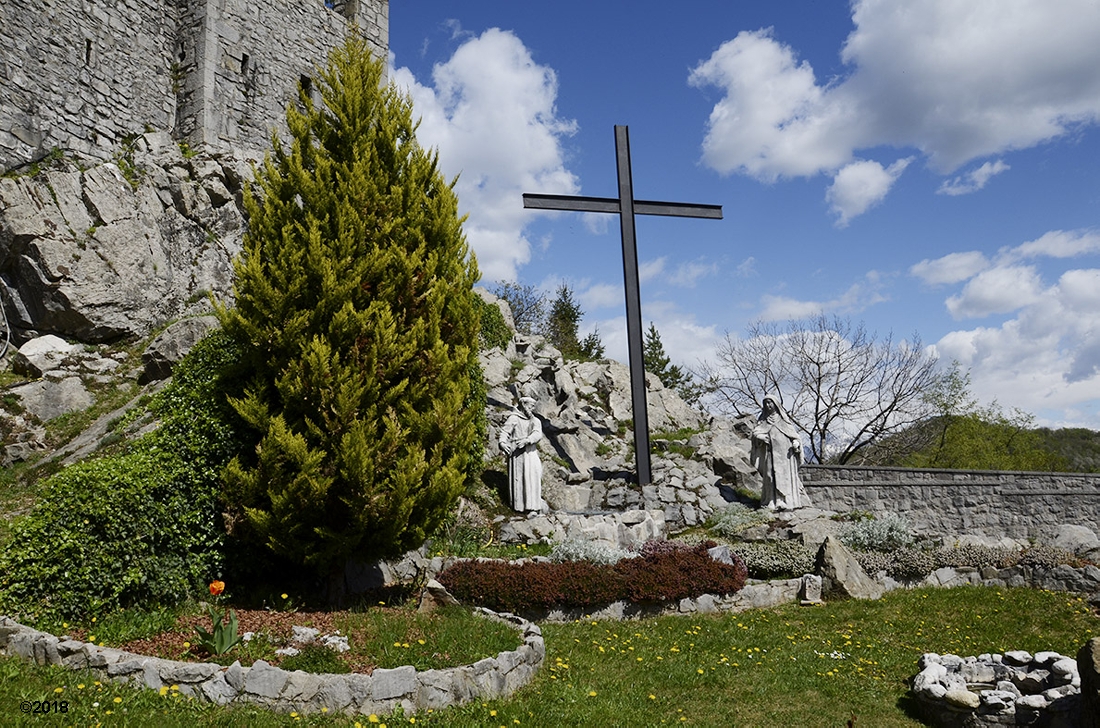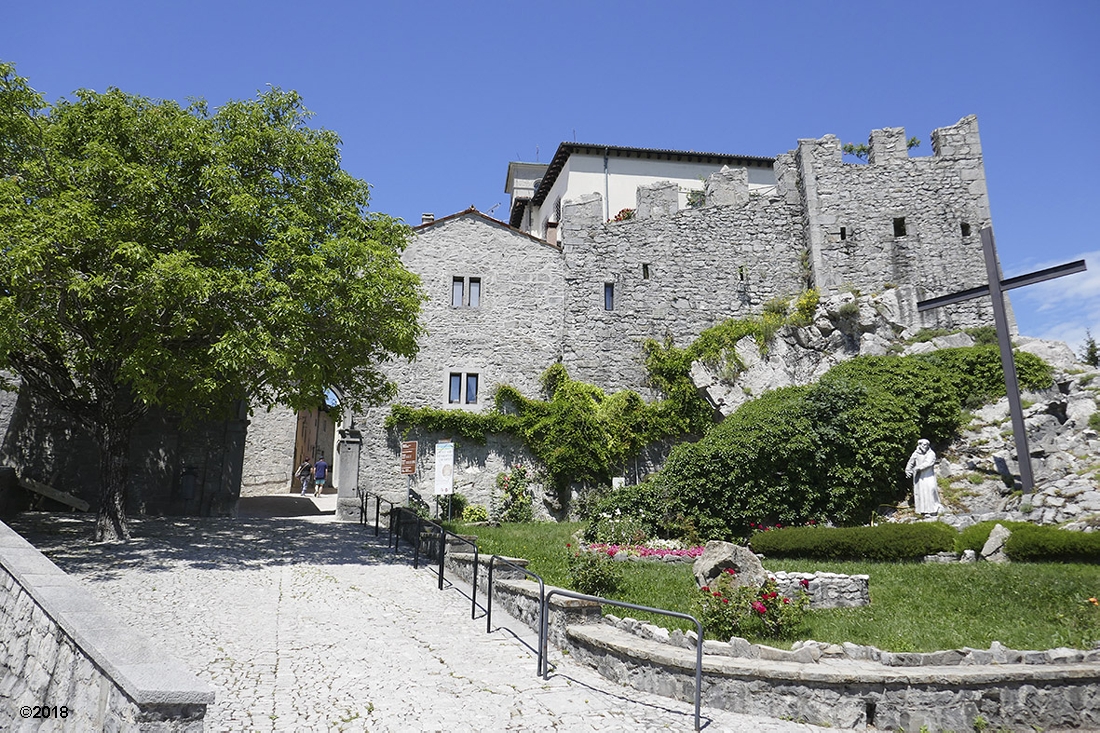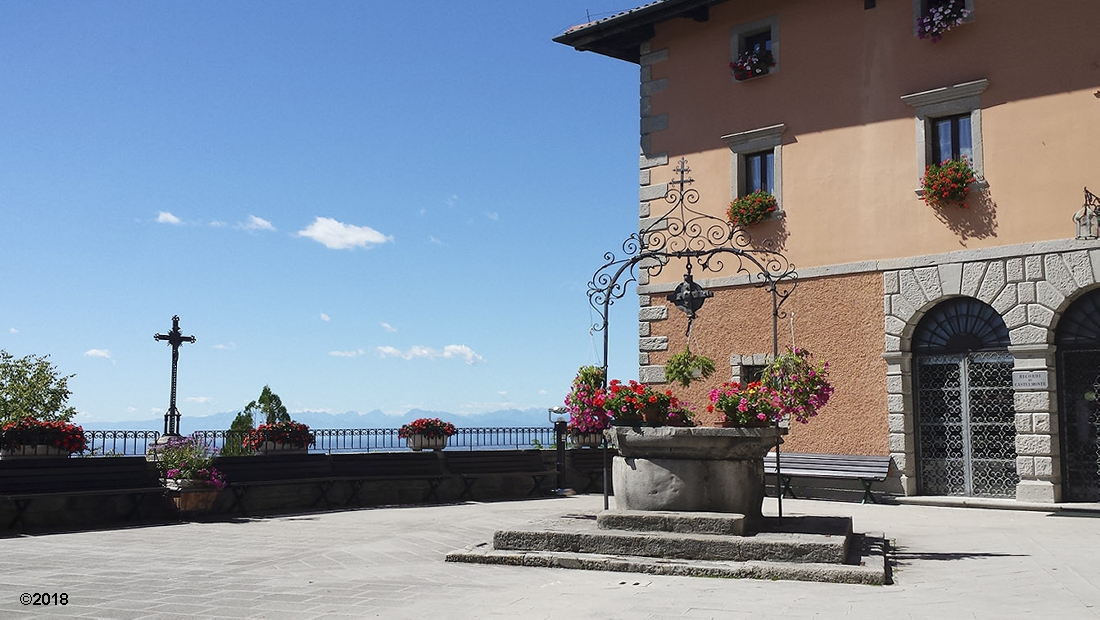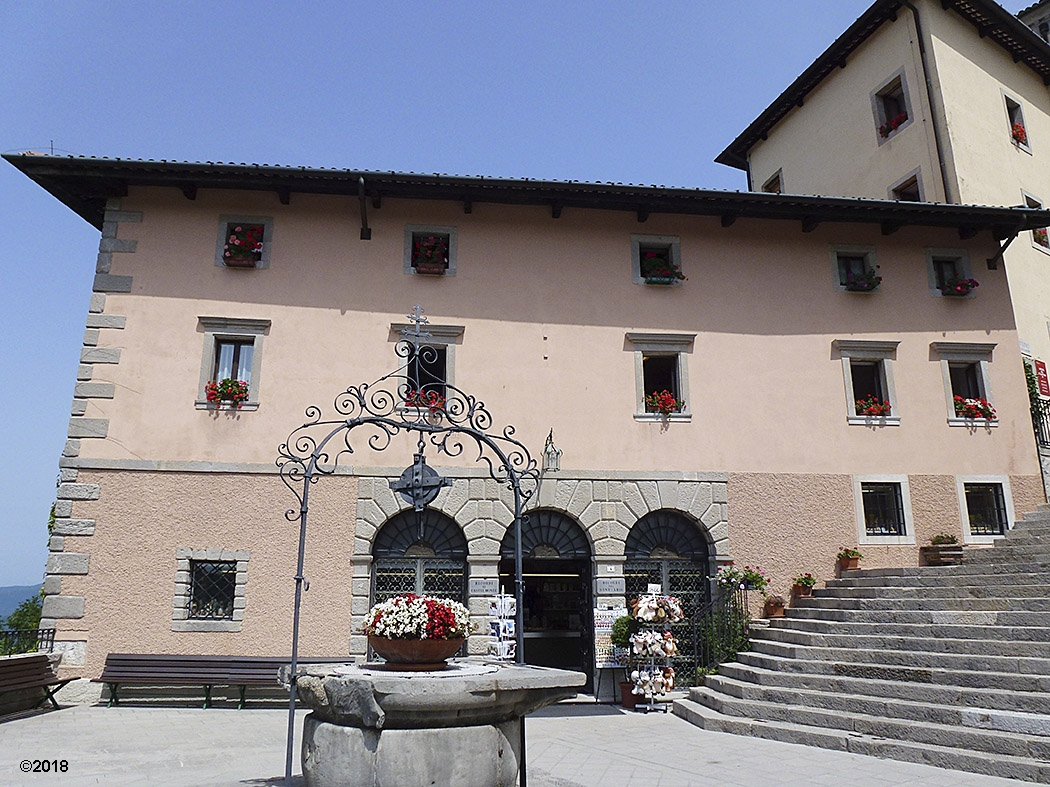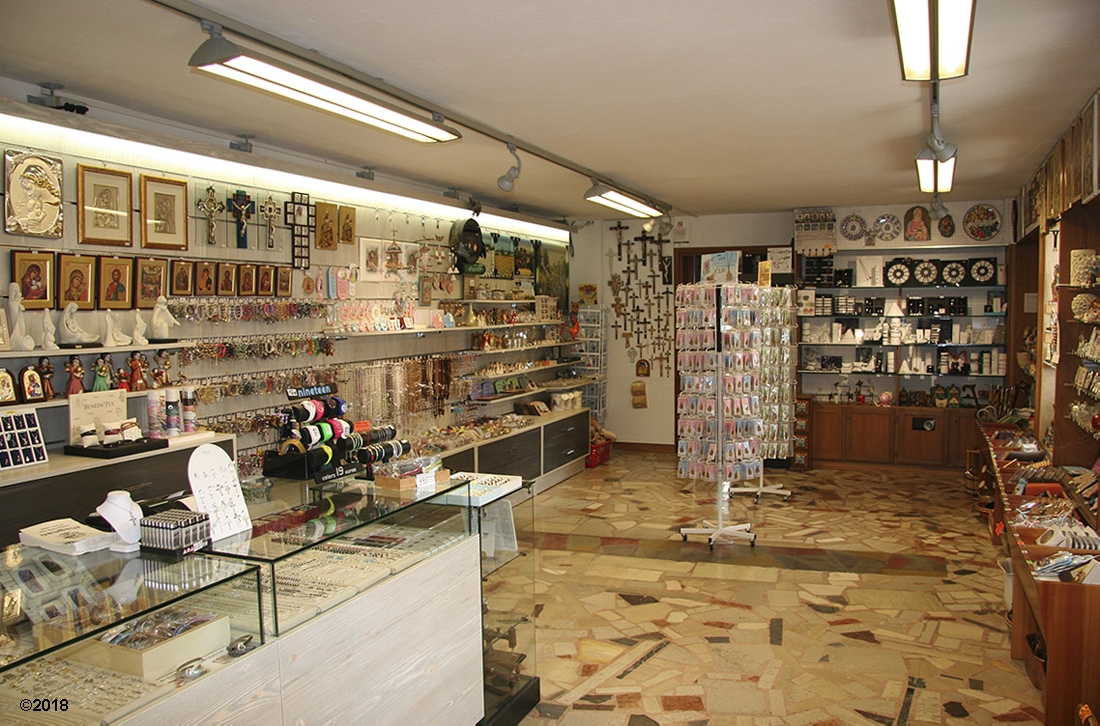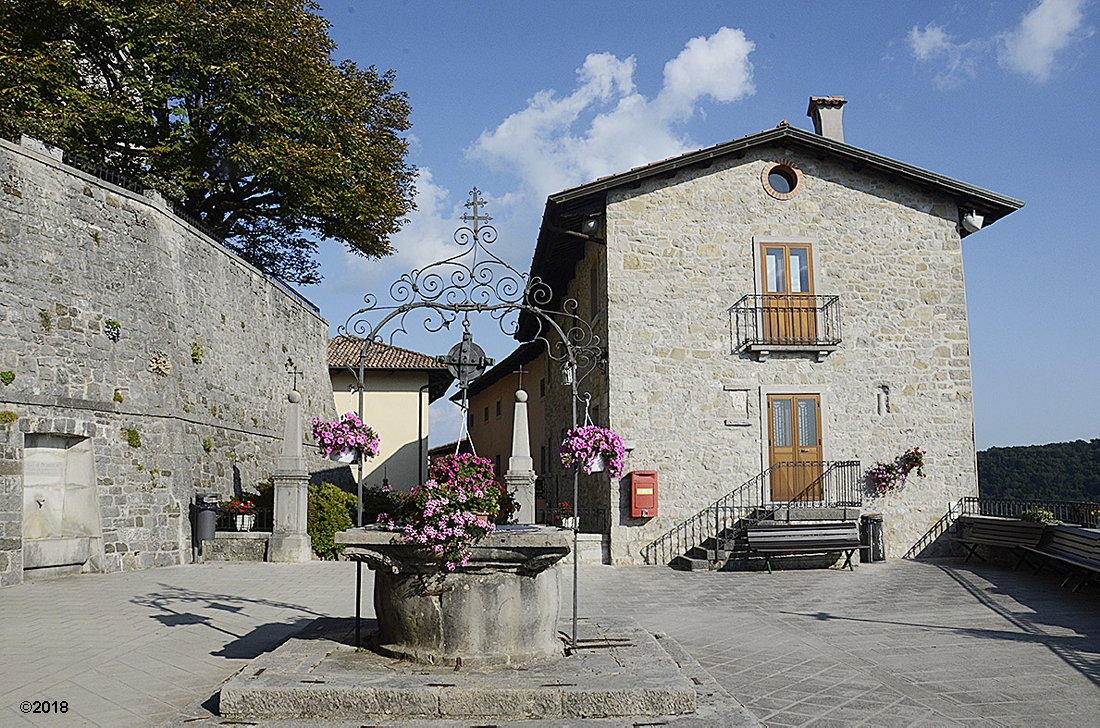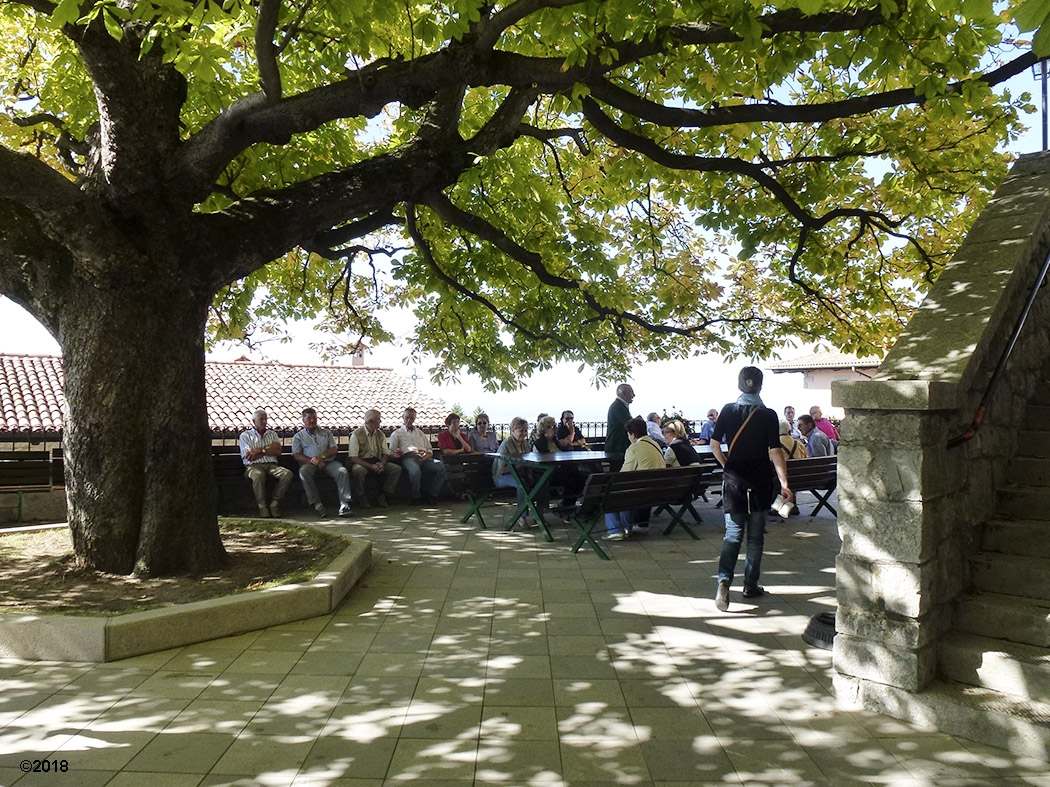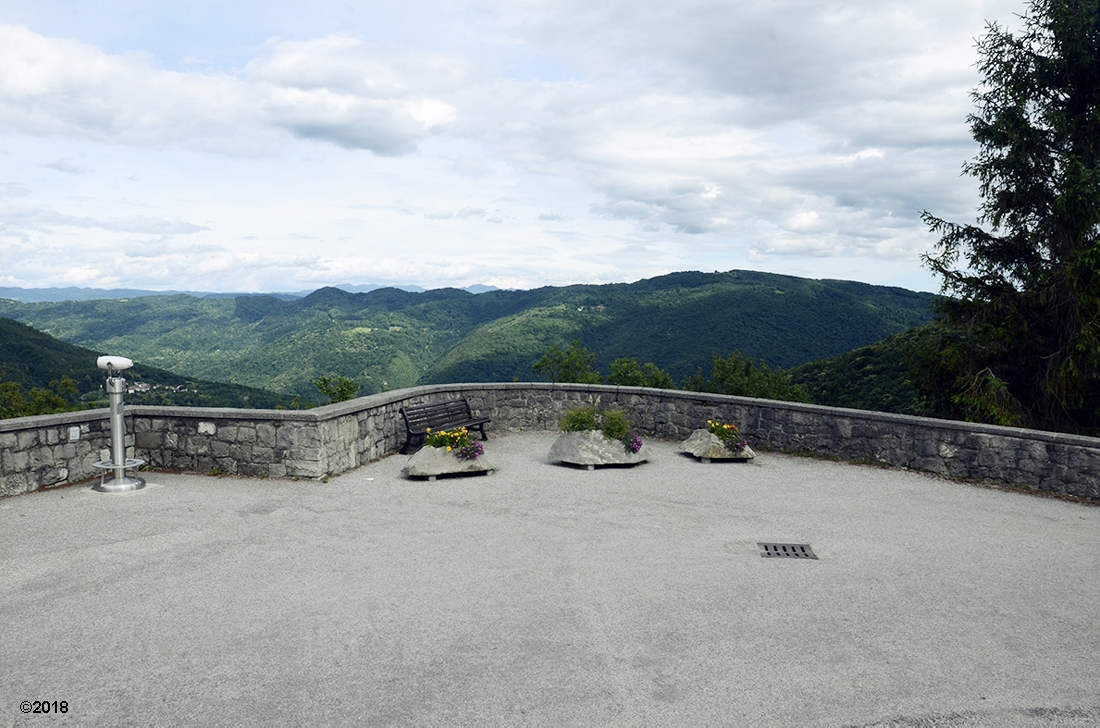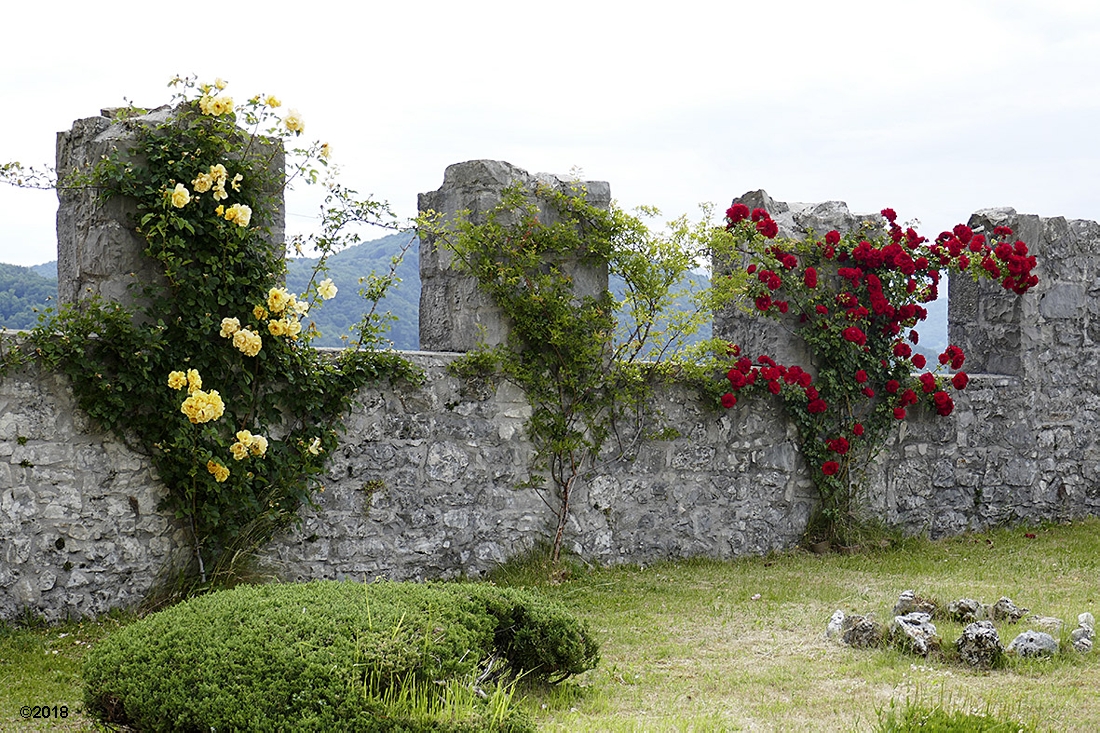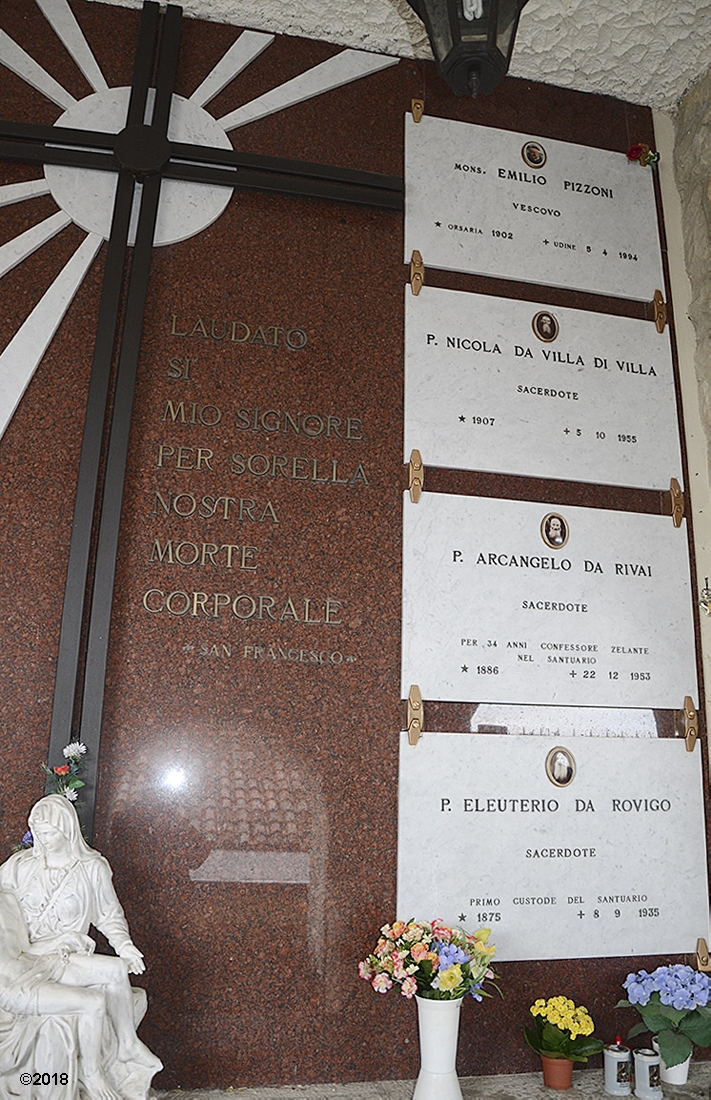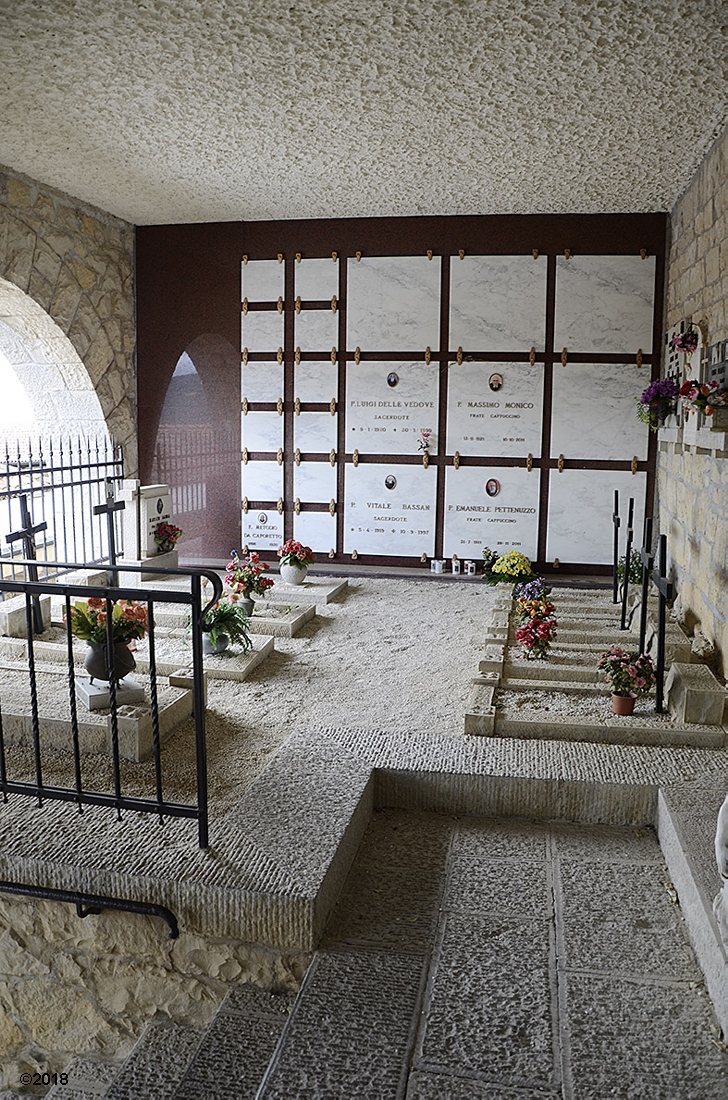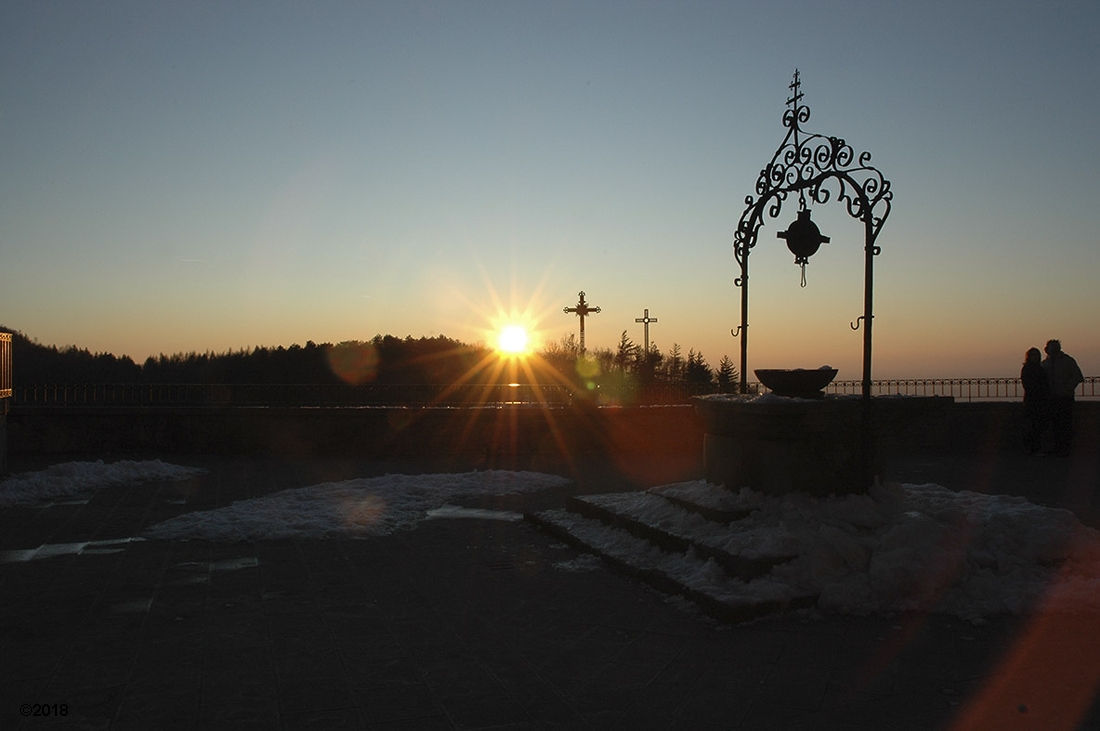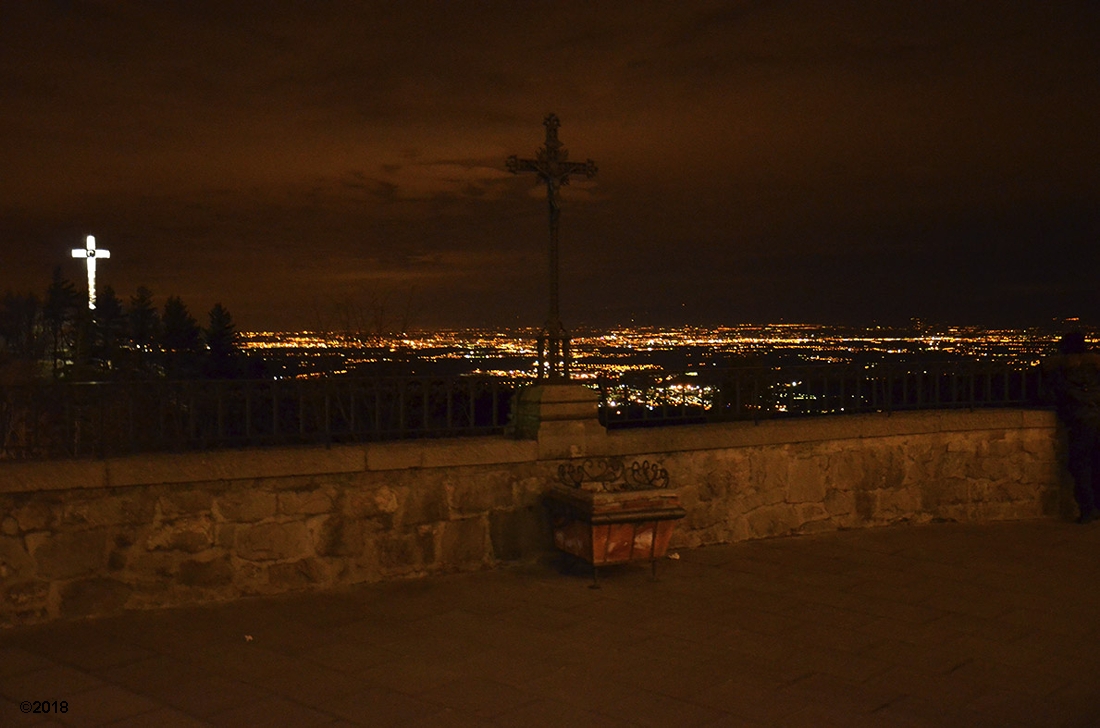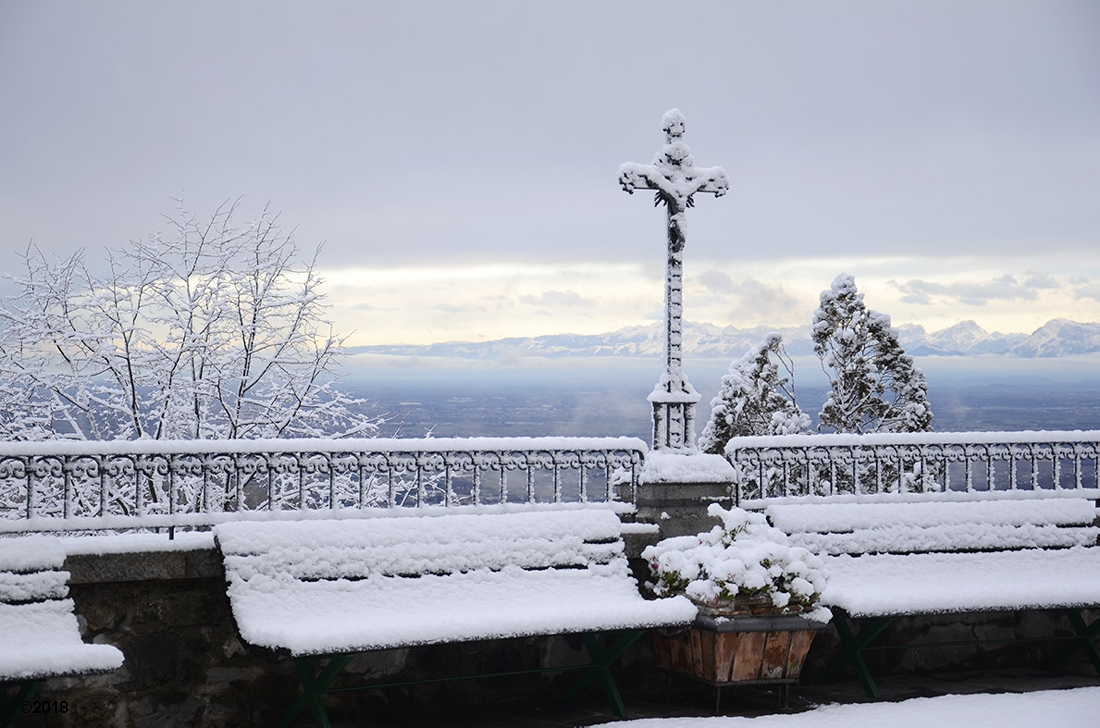The hill of the cross called del Campuc or dell'Utia, that is of the brim, welcomes the pilgrims who arrive. The first cross, placed on the top, was hoisted in 1948 and then covered in 1950. In 2005 it was completely renovated maintaining the measures of the previous one (cement pedestal 4 m; vertical arm height 12 m; horizontal arm 7 m; weight 27 quintals). At night, its lighting makes it visible from every point of the plain, directing the gaze and attention of the faithful even from afar. Since 1992, the hill of the cross has been an attractive natural park with paths, pitches and benches where anyone can find refreshment for a picnic or for a simple moment of rest. From the foot of the large metal cross you can enjoy an extraordinary panorama.
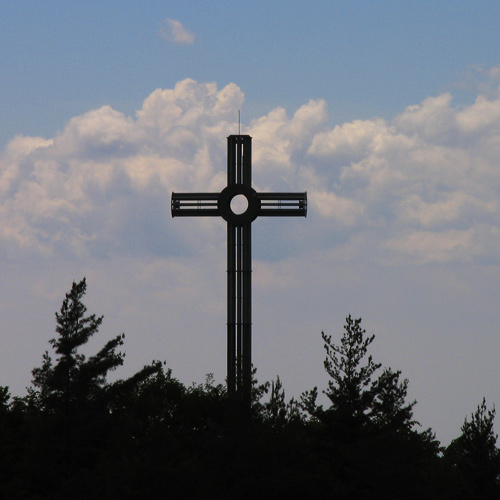
You enter the village of Castelmonte through two doors. Pilgrims arriving from Cividale ascended to the village by a path now transformed into a stepped staircase, rebuilt several times due to various subsidence, which led to the beautiful tower radically restored in 1956. The pilgrims who instead arrived from the opposite side crossed the door of the Pocacilla or Poklecila (kneeler in Slavic), Once upon a time all those who arrived stopped there before entering. Three centuries ago it was a small hole then it was enlarged. To his left is a walnut tree from 1937 and to his right the cross with the statues of Saints Francis and Clare of Assisi.
The nature of a real castle can be seen from afar. Until the end of the eighteenth century, the two doors were closed in the evening to defend themselves against intrusions and thieves or brigands. On the tower you can see the loopholes from which muskets and thrusters protruded to defend themselves. Next to the tower there was a room which in 1765 was equipped for use as a prison.
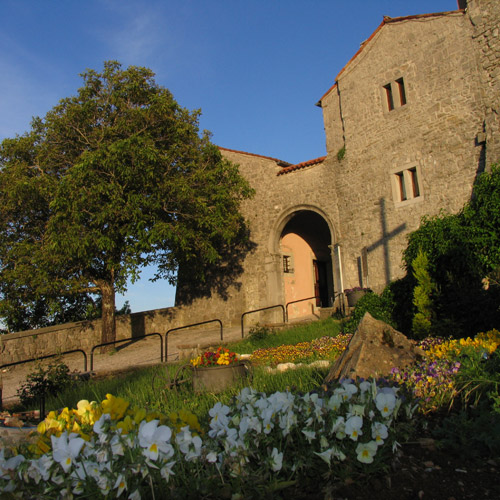
 The alley and the square of the well
The alley and the square of the wellAn alley leads to a small square in the center of which there is a well from 1645, the main water resource of Castelmonte until the construction of the first aqueduct in 1954 (since 1979 Castelmonte has received its water from the large collector located on Mount Plagnava). Opposite stands the building of the Loggia.
 The horse chestnut pitch and the cemetery
The horse chestnut pitch and the cemeteryBefore entering the church there is a small area where a large horse chestnut casts its shadow. Refreshment place from which the landscape below can be seen. Until 1900 there was a centuries-old lime tree here, which succeeded older lime trees. In this place the disputes regulated by the steward of the castle were held in ancient times. Following the stairway that descends, one arrives at the small cemetery close to the wall of the crypt. In it rest eminent figures of Capuchin Friars. Among them stand out: Fr. Eleuterio da Rovigo and Fr. Arcangelo da Rivai who died in the concept of holiness after having celebrated the sacrament of Reconciliation for 33 years in this shrine.
 The facade and the bell tower
The facade and the bell towerThe foundation of the church dates back to the decade 1469-1479. The facade was rebuilt in 1930. The mosaic placed on the crescent above the entrance door is the work of the Treviso artist Angelo Gatto and was placed here in August 1979. A 'Madonna with Child' is set on the south facade suckling', white marble bas-relief from the end of the fifteenth century. The bust of P. Eleuterio commemorates the first Capuchin custodian of the sanctuary. The bell tower, from 1475, was modified by three elevations; the last is from 1954. On the corner of the bell tower we find various inscriptions, signs of the times and subsequent reconstructions.
Outside, looking at various points at the roof of the sanctuary and of the various buildings, you can see small metal spikes placed almost everywhere: it is the lightning rod system. Lightning strikes are a recurring feature of rocky mountain ridges, but some extra attention is needed here. Indeed, Friuli-Venezia Giulia is the region that holds the European record for the number of lightning strikes.
In Castelmonte, the lightning that struck the sanctuary on 21 September 1469 is sadly known, also causing a furious fire that devastated the church and bell tower. Before that, the chronicles mention that, in 1328, "the priest Domenico del Monte died struck by lightning".
A first project for a lightning rod took place at the end of the 1700s, but in the meantime lightning struck freely and fearfully together with the wind which shook the poor structures and made the tiles regularly fly off the roofs. Violent storms still remain one of the recurring maintenance problems of the sanctuary.
